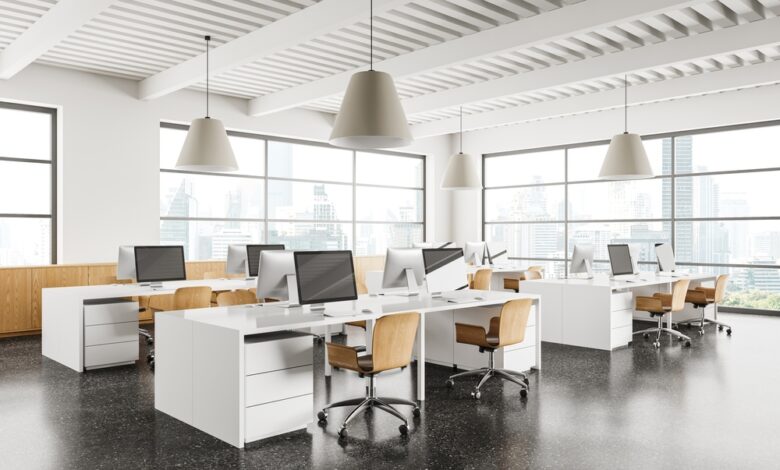
By Ekta Puthran, Head of Sales APAC & MEA – Collaboration, Barco
The workplace has changed significantly more in the past 5 years than in the 50 years before. New work methods, such as remote work, predominantly office-based work, and all the hybrid forms in between, are now possible. To keep up with these changes, IT managers must reimagine the office environment. What are the best investments for IT managers from companies focusing on productive hybrid working and making their office attractive?
Major players like Apple, Meta, Zoom, and Amazon are still grappling with hybrid working and are seeking ways to get their employees back to the office. Does mandating employees to return to the office help? No, that’s certainly not the right solution. Mandates, rules, and policies only lead to frustration and demotivation.
So, what really helps? Creating a workspace that employees want to return to. Integrating elements like comfortable furniture, natural lighting, and even wellness spaces can significantly enhance the appeal of the office. Companies are particularly well-positioned to lead this transformation in the UAE and Saudi Arabia, where the focus on innovation and modernization is strong. These countries have seen significant investments in smart city projects and advanced infrastructure, providing a solid foundation for modern, attractive workplaces.
While everything hinges on creating a good employee experience, focusing on employee experience fosters increased morale and productivity and contributes to lower attrition rates and a positive business reputation.

According to a Gartner survey in 2023, as many as 12% of employees are considering changing jobs if their employer doesn’t provide a hybrid work strategy. On the other hand, 84% of IT managers, Employee Experience is a strategic priority, according to Investment Priorities for the Workplace and Video Conferencing, Frost & Sullivan, 2023. This highlights a critical need for companies to adapt.
It’s often challenging for companies to set up their offices in a way that allows employees to have meaningful interactions, collaborate optimally, and truly connect with each other—wherever they are; only then do employees feel connected, appreciated, and motivated. Companies need to focus on building a culture of inclusivity and support to strengthen these connections. To modernize the workplace, an organization must address not only the corporate culture and the design of physical workspaces, but also invest in new technology.
Cultural values and traditions are integral to business practices in the region and creating workplaces that respect and integrate these values is essential. For instance, having prayer rooms and areas that accommodate cultural practices can greatly enhance employee satisfaction and inclusivity.
The future workplace must facilitate hybrid working. It needs to become an inclusive environment where employees are productive and can easily collaborate, whether they’re working from home or in the office. Employees working from home need to feel seen and heard in hybrid meetings. Everyone should have equal opportunities to contribute wherever they dial in for a meeting. And that’s where the right video technology comes in.
Technology transformation and a video-first approach in meetings is intertwined with reshaping a modern, employee-centric workplace. The value of high-quality audio & video communication in meetings is deeply entrenched across the hybrid organization. Today, however, employees can organize video meetings in less than 15% of spaces according to Investment Priorities for the Workplace and Video Conferencing, Frost & Sullivan, 2023. That’s why many IT managers are looking for seamless solutions to equip meeting rooms with video. According to that same research, 95% of IT decision-makers are actually planning office changes to support remote and hybrid work and meetings in the coming year.
When selecting wireless video conferencing and collaboration solutions, they focus on the reliability, ease of use, security, and interoperability of the technology. Other important factors influencing their choice include flexibility, efficient management, and easy installation of solutions. Ensuring that these solutions are user-friendly and require minimal technical support is essential to reduce downtime and increase productivity.
We see productivity solutions such as ClickShare offering IT managers unparalleled flexibility and simplicity, by eliminating messy cables, complicated setups, and limited functionality. With just one click on the ClickShare Button or App, a user can start a meeting in less than 7 seconds and connect their laptop to the audio and video equipment in the meeting room.
This juncture marks a pivotal moment in workplace transformation. By successfully navigating this transition, companies can set a new standard for the future of work. A misstep could discourage efforts to rebuild connectivity, while success could herald a new way of working characterized by an enhanced employee experience, seamless connections, and empowered and efficient employees. With the right technology to ensure great user experiences and equal participation for all meeting attendees, IT managers can find with peace of mind and more flexibility. The key to creating an attractive workspace lies in understanding and addressing the evolving needs of employees. By focusing on technology, design, and culture, IT managers can transform offices into vibrant, productive hubs that draw employees in and foster a thriving work environment.




